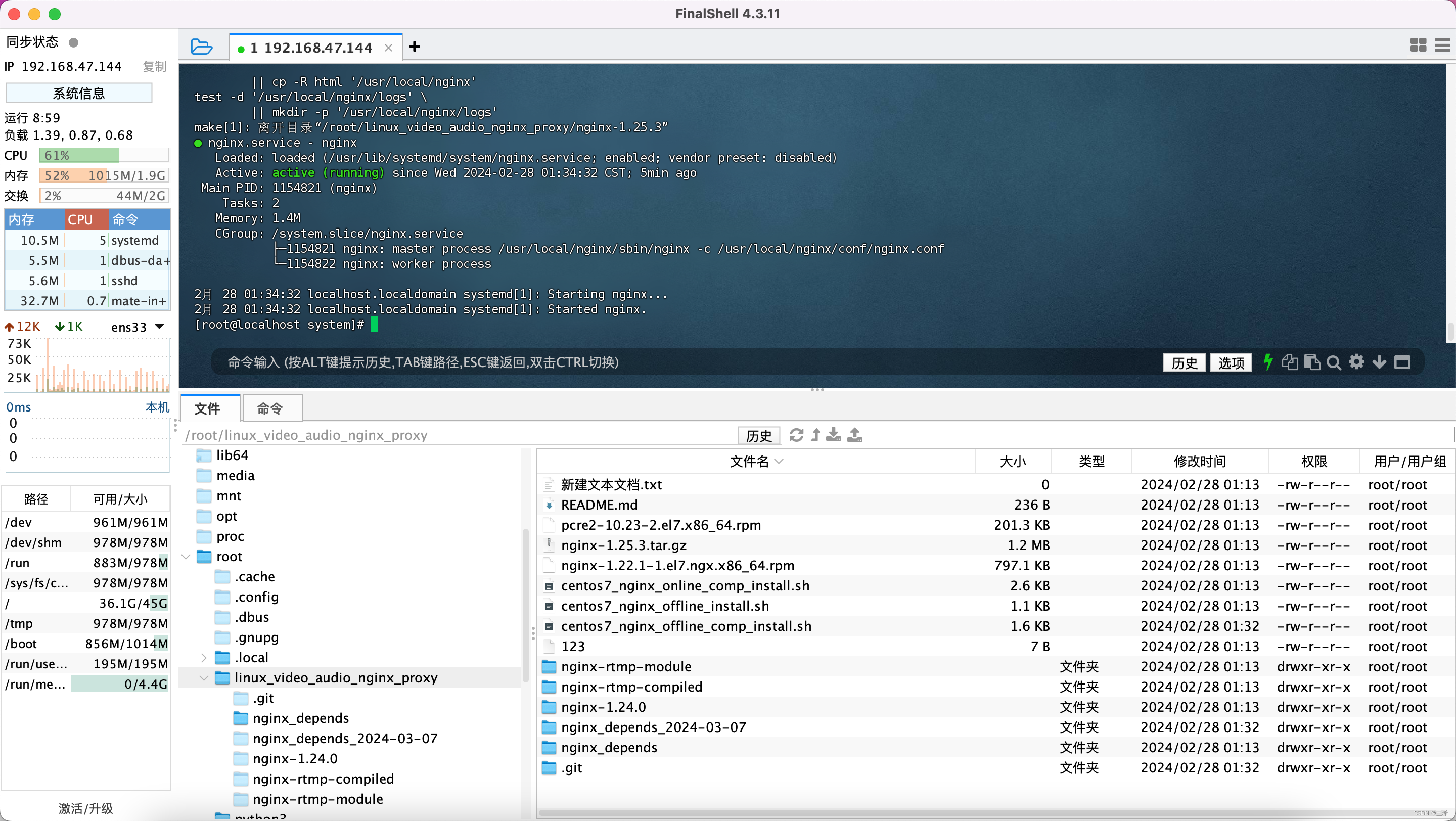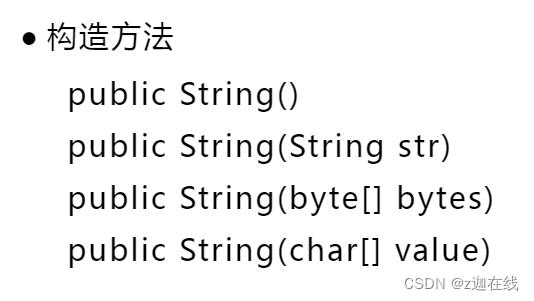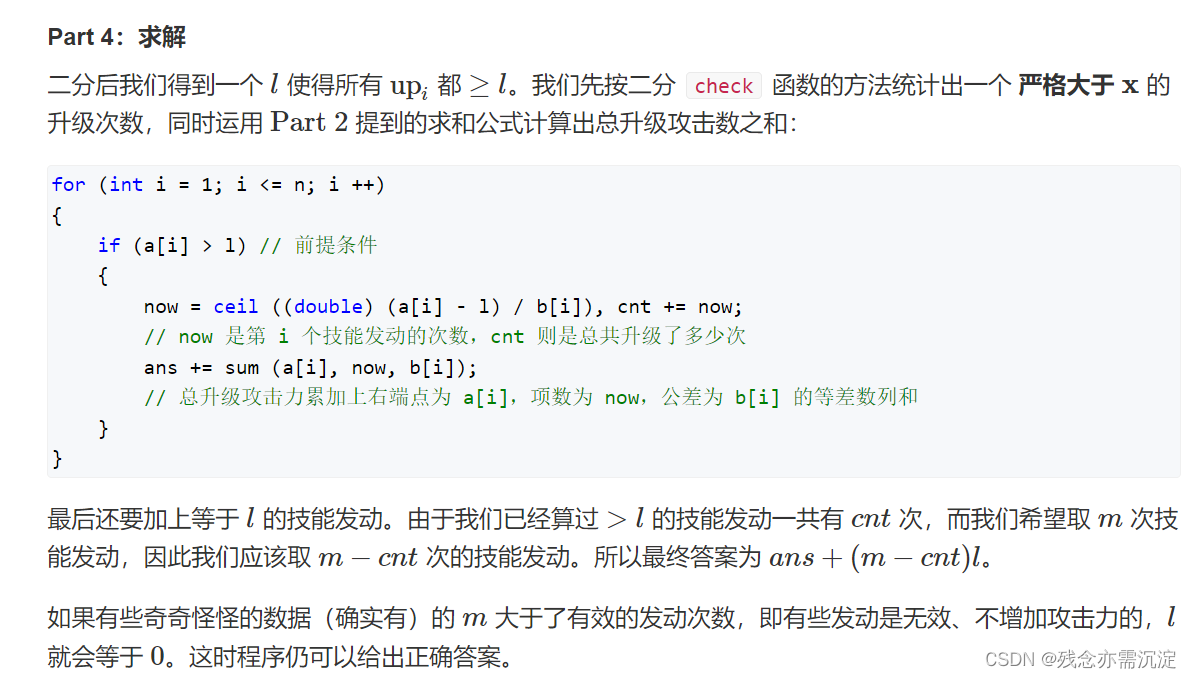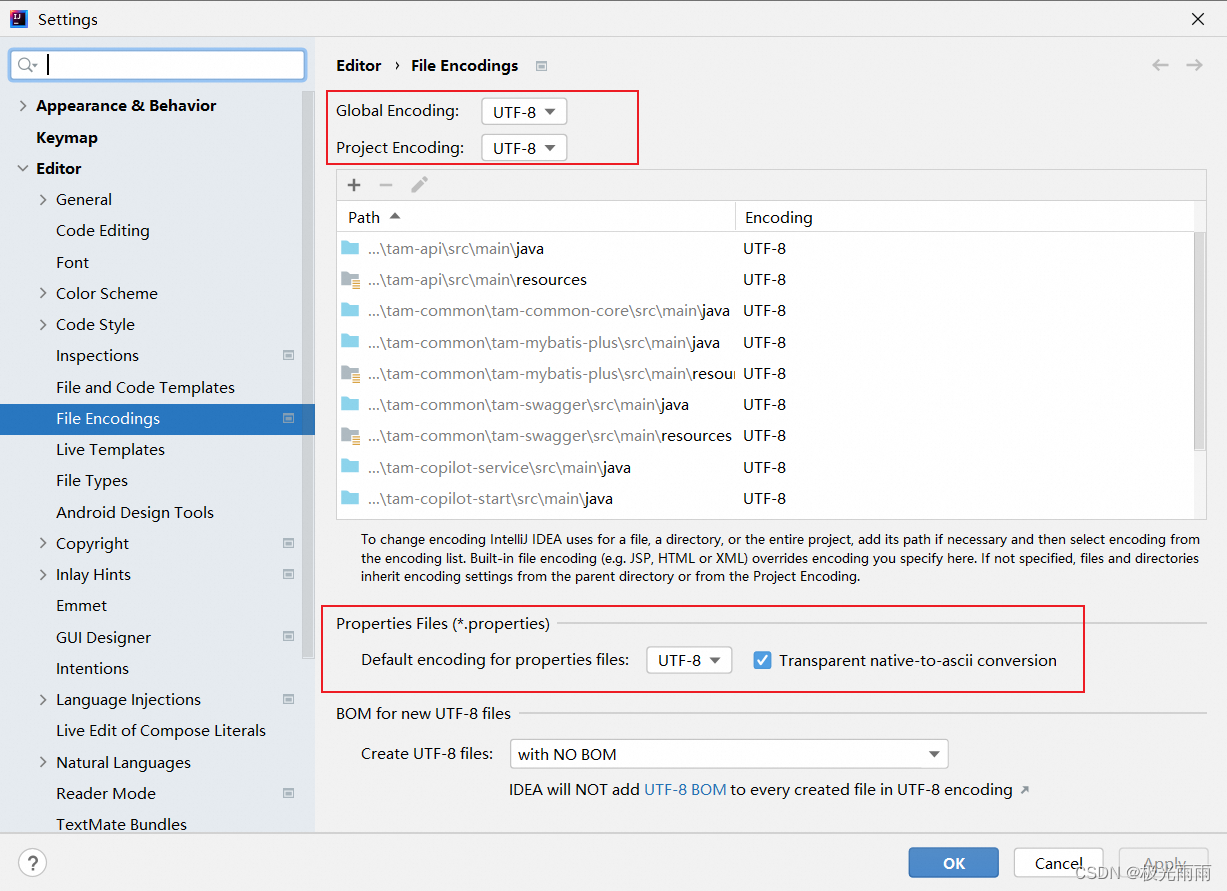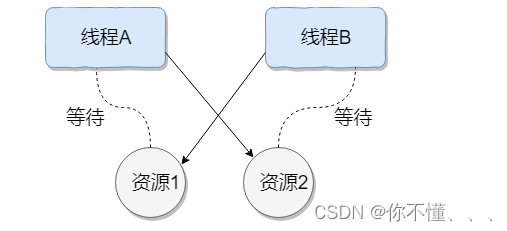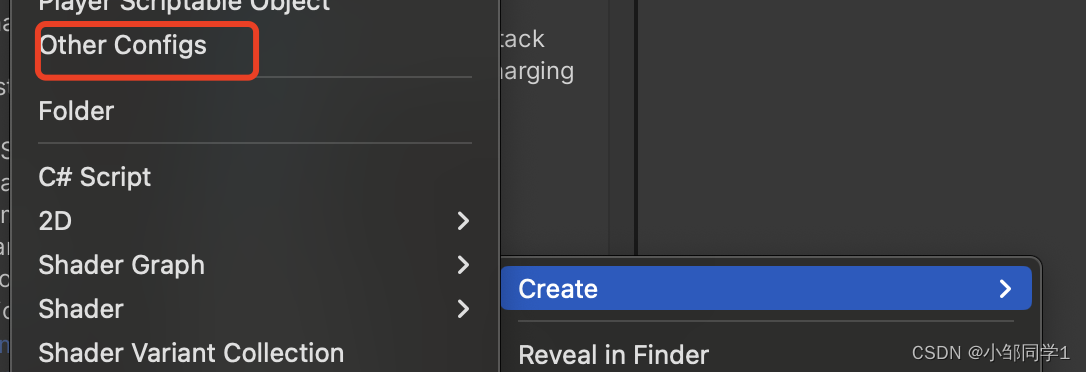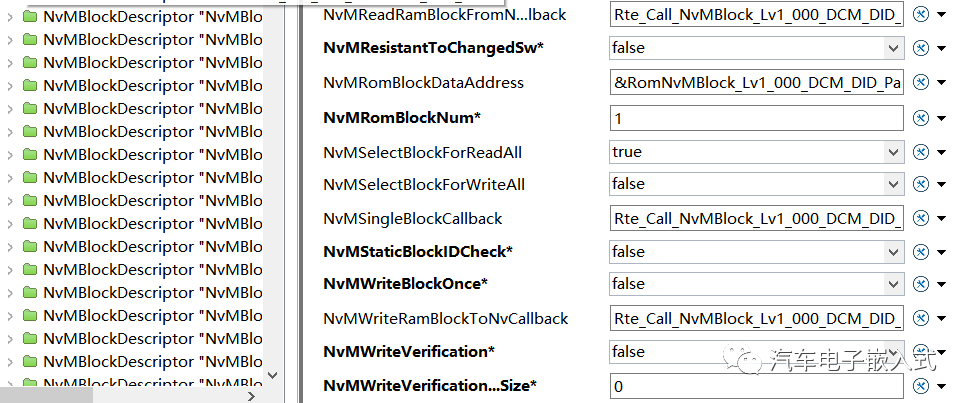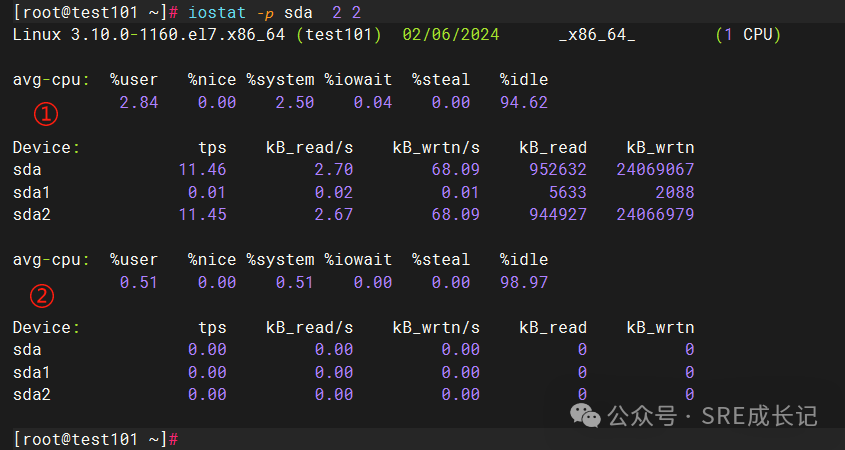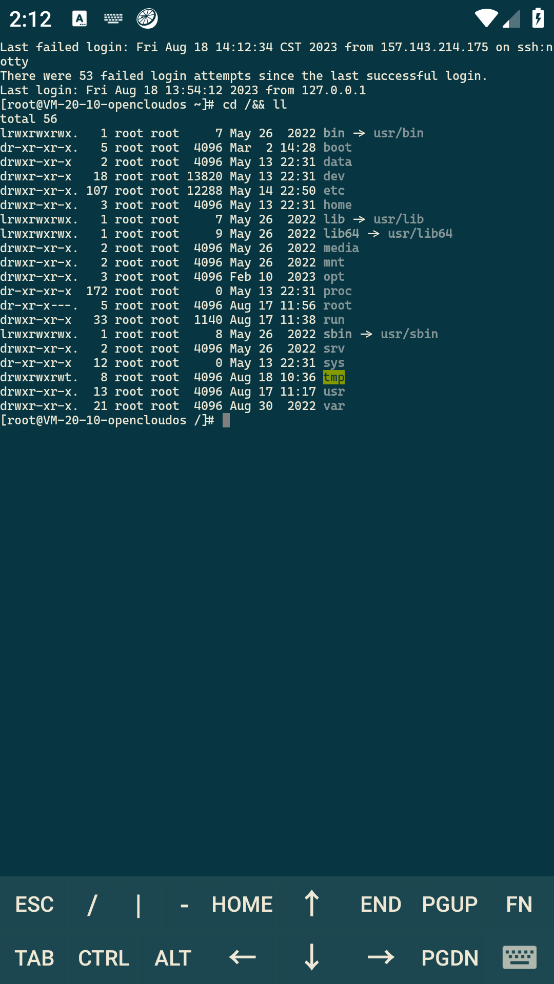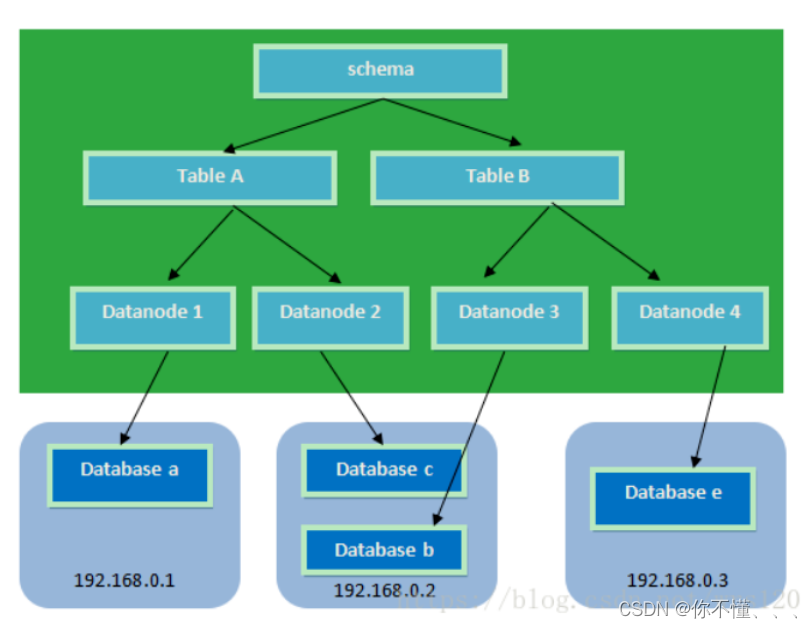一、Python Number(数字)常用的函数
主要有math模块和cmath模块。
math模块:提供了许多对浮点数的数学运算函数。
cmath模块:提供了一些用于复数运算的函数。
使用两个模块里的函数时要先导入:
import math
查看math模块里的函数:
import math
dir(math)
['__doc__', '__loader__', '__name__', '__package__', '__spec__', 'acos', 'acosh', 'asin',
'asinh', 'atan', 'atan2', 'atanh', 'cbrt', 'ceil', 'comb', 'copysign', 'cos', 'cosh',
'degrees', 'dist', 'e', 'erf', 'erfc', 'exp', 'exp2', 'expm1', 'fabs', 'factorial',
'floor', 'fmod', 'frexp', 'fsum', 'gamma', 'gcd', 'hypot', 'inf', 'isclose',
'isfinite', 'isinf', 'isnan', 'isqrt', 'lcm', 'ldexp', 'lgamma', 'log', 'log10',
'log1p', 'log2', 'modf', 'nan', 'nextafter', 'perm', 'pi', 'pow', 'prod', 'radians',
'remainder', 'sin', 'sinh', 'sqrt', 'sumprod', 'tan', 'tanh', 'tau', 'trunc', 'ulp']
查看cmath模块里的函数:
import cmath
dir(cmath)
['__doc__', '__loader__', '__name__', '__package__', '__spec__', 'acos', 'acosh',
'asin', 'asinh', 'atan', 'atanh', 'cos', 'cosh', 'e', 'exp', 'inf', 'infj',
'isclose', 'isfinite', 'isinf', 'isnan', 'log', 'log10', 'nan', 'nanj',
'phase', 'pi', 'polar', 'rect', 'sin', 'sinh', 'sqrt', 'tan', 'tanh', 'tau']
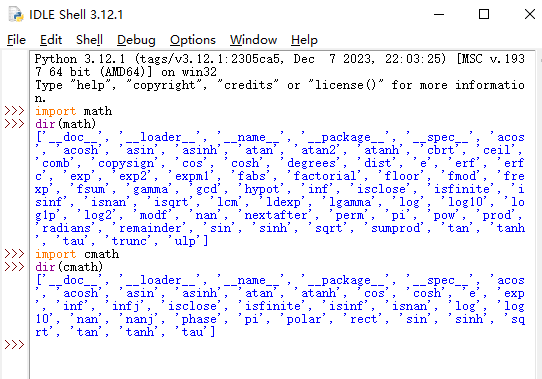
示例:
import math
c=math.sqrt(10)
print(c)
import cmath
d=cmath.sqrt(10)
print(d)
结果如下:

其他函数具体使用的时候再贴出来。
二、字符串类型常用函数
主要是string模块
查看string模块:
>>> import string
>>> dir(string)
['Formatter', 'Template', '_ChainMap', '__all__', '__builtins__', '__cached__',
'__doc__', '__file__', '__loader__', '__name__', '__package__', '__spec__',
'_re', '_sentinel_dict', '_string', 'ascii_letters', 'ascii_lowercase',
'ascii_uppercase', 'capwords', 'digits', 'hexdigits', 'octdigits',
'printable', 'punctuation', 'whitespace']
Unicode 字符串:(引号前小写的"u"表示这里创建的是一个 Unicode 字符串。)
示例如下:
>>> u'Hello\u0020World !'#使用 Python 的 Unicode-Escape 编码
'Hello World !'
>>> u'Hello World !'
'Hello World !'
三、列表相关的函数(最常用,很重要呦)
1、查看列表函数:
dir(list)
['__add__', '__class__', '__class_getitem__', '__contains__', '__delattr__',
'__delitem__', '__dir__', '__doc__', '__eq__', '__format__', '__ge__',
'__getattribute__', '__getitem__', '__getstate__', '__gt__', '__hash__',
'__iadd__', '__imul__', '__init__', '__init_subclass__', '__iter__',
'__le__', '__len__', '__lt__', '__mul__', '__ne__', '__new__',
'__reduce__', '__reduce_ex__', '__repr__', '__reversed__',
'__rmul__', '__setattr__', '__setitem__', '__sizeof__',
'__str__', '__subclasshook__', 'append', 'clear', 'copy',
'count', 'extend', 'index', 'insert', 'pop', 'remove', 'reverse', 'sort']
列表函数:
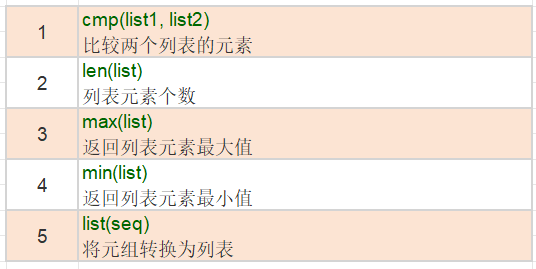
2、列表的创建、访问与更新
(1)序列是Python中最基本的数据结构。序列中的每个元素都分配一个数字——它的位置,或索引,
(2)序列都可以进行的操作包括索引,切片,加,乘,检查成员。
(3)Python有6个序列的内置类型,最常见的是列表和元组。
(4)Python内置确定序列的长度以及确定最大和最小的元素的方法。
(5)列表可以作为一个方括号内的逗号分隔值出现。列表的数据项不需要具有相同的类型。创建一个列表,只要把逗号分隔的不同的数据项使用方括号括起来即可。
示例如下:
print("------创建列表------")
#以下三种三种方式
list1 = ['hello', 'world', 307, 2024]
list2 = [1, 2, 3, 4, 5,'F',"307","TODAY" ]
list3 = ["a", "b", "c", "d"]
print(list1,list2,list3)
print("------访问列表------")
print("list1[0]:",list1[0])
print("list2[1:6]:",list2[1:6])
print("list2[1:]:",list2[1:])
print("list3[2]:",list3[2])
print("list3[-2]:",list3[-2])
print("------更新修改列表------")
#使用append()添加列表项
list1.append('周四')
list1.append("sunshine")
print(list1)
#使用del删除列表项
del list3[2]
print(list3)
#使用remove()删除列表项
list2.remove("307")
print(list2)
print("------脚本操作符--(+、*与字符串类似)----")
print(list1+list3) # + 组合
print(list3*2) # * 重复
if 2 in list2: # 元素是否在列表内
print("true")
else:
print("false")
for num in list1: #迭代
print(num)
x = len(list1) # 列表长度
print(x)
运行结果如下:
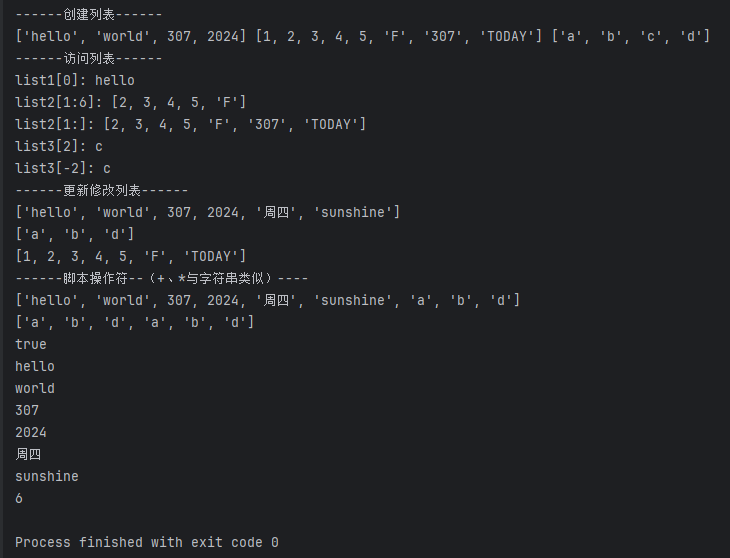
四、元组
查看tuple函数:
dir(tuple)
['__add__', '__class__', '__class_getitem__', '__contains__', '__delattr__',
'__dir__', '__doc__', '__eq__', '__format__', '__ge__', '__getattribute__',
'__getitem__', '__getnewargs__', '__getstate__', '__gt__', '__hash__',
'__init__', '__init_subclass__', '__iter__', '__le__', '__len__',
'__lt__', '__mul__', '__ne__', '__new__', '__reduce__', '__reduce_ex__',
'__repr__', '__rmul__', '__setattr__', '__sizeof__', '__str__',
'__subclasshook__', 'count', 'index']
(未完待续……敬请期待!哈哈哈)
